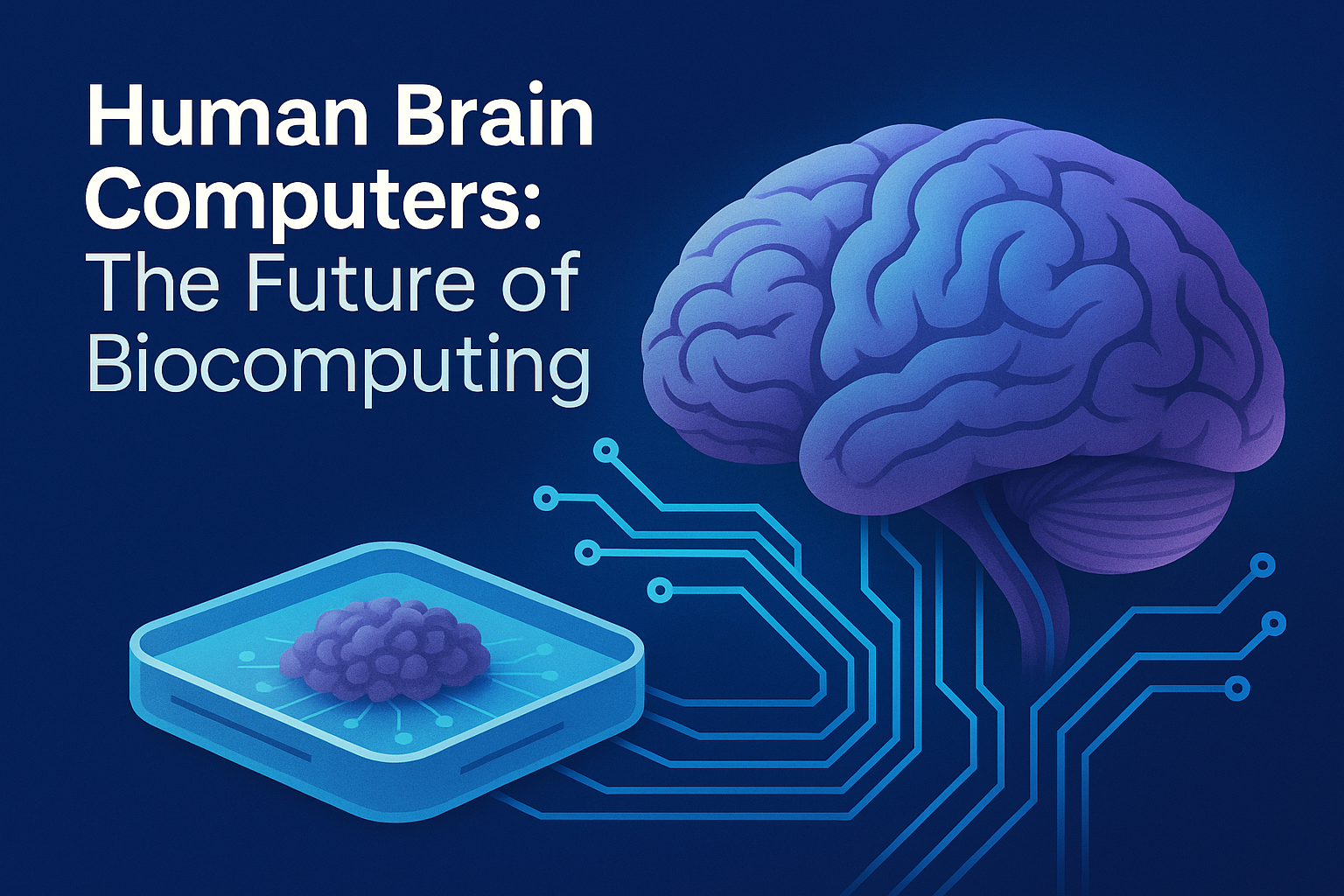
Human Brain Computers: The Future of Biocomputing
In a quiet Swiss town near Lake Geneva, scientists are creating a new kind of computer — one that runs on living brain cells. These human brain computers use clusters of neurons that can receive and send electrical signals, performing basic information processing tasks similar to digital machines.
What Are Human Brain Computers?
Human brain computers—also known as biocomputers or wetware systems—use real human neurons grown from stem cells. These neurons form tiny networks capable of communication through electrical impulses. Unlike silicon chips that simulate brain activity, these systems use actual biological tissue, offering a glimpse into a future where computers can think and learn more organically.
Researchers believe that these neural systems could one day match or even surpass artificial intelligence and quantum computers in efficiency and adaptability. Their main advantage lies in the brain’s unmatched energy efficiency: the human brain operates at around 20 watts while performing an immense number of calculations—something that would require millions of watts in traditional supercomputers.
How Human Brain Computers Work
The process begins with induced pluripotent stem cells (iPS cells), which scientists reprogram into neurons. These brain cells are then placed on electrode arrays that act as the bridge between biological and digital systems. The electrodes send controlled electrical signals and record the cells’ responses, allowing researchers to “communicate” with the neural network.
Some teams grow the neurons into three-dimensional clusters called organoids, while others prefer flat cultures for better control and transparency. In both cases, the goal is to teach these cells how to perform logical or sensory tasks, such as recognizing patterns or interpreting signals.
Recent Breakthroughs
One breakthrough came from researchers at the University of Bristol, who trained brain organoids to recognize Braille letters. The organoids received electrical patterns representing different letters and produced distinct, repeatable responses. When combined, multiple organoids improved accuracy to more than 80%, proving that neural clusters can process and classify information.
Another company, Cortical Labs in Australia, developed a modular system of cultured neurons that could learn to play the video game Pong. By rewarding correct responses with organized electrical patterns and punishing mistakes with random noise, the neurons gradually improved their gameplay — a basic demonstration of learning and memory.
The Business of Biocomputing
Swiss startup FinalSpark has commercialized this technology by offering online access to its brain-cell systems. Academic researchers can rent time to conduct experiments, while companies can subscribe for exclusive access at around $5,000 per month. FinalSpark also sells advanced biocomputing models to clients exploring AI, robotics, and neuroscience applications.
Meanwhile, Cortical Labs has launched the world’s first biological computer, the CL1, priced at $35,000. It allows users to send commands, analyze responses, and even design real-time control systems powered by living neurons. Some developers are exploring creative uses, from adaptive music software to experimental games.
Challenges and Ethical Concerns
Despite the excitement, experts urge caution. Some scientists, like developmental biologist Madeline Lancaster from the University of Cambridge, warn against exaggerating claims that these systems are “sentient.” Misusing such terms could lead to unnecessary ethical debates or restrictive regulations that slow valuable medical research.
Critics also question whether current experiments demonstrate genuine computation or merely reactive behavior. Simple feedback loops, they argue, can mimic learning without true intelligence. Others, like neuroscientist Alysson Muotri, remain optimistic, believing that organoids represent the foundation of a new era in computing — one that merges biology with technology.
The Road Ahead
For now, human brain computers remain experimental. They are not ready to replace traditional processors, but their potential is undeniable. Future work aims to train neural systems for more complex decision-making and real-world applications such as robotics control, data interpretation, and environmental modeling.As scientists continue to refine their methods, one thing is certain: the boundary between biological intelligence and machine computation is fading. Human brain computers may soon redefine not just how we process information, but what it means to “think” in the digital age.






